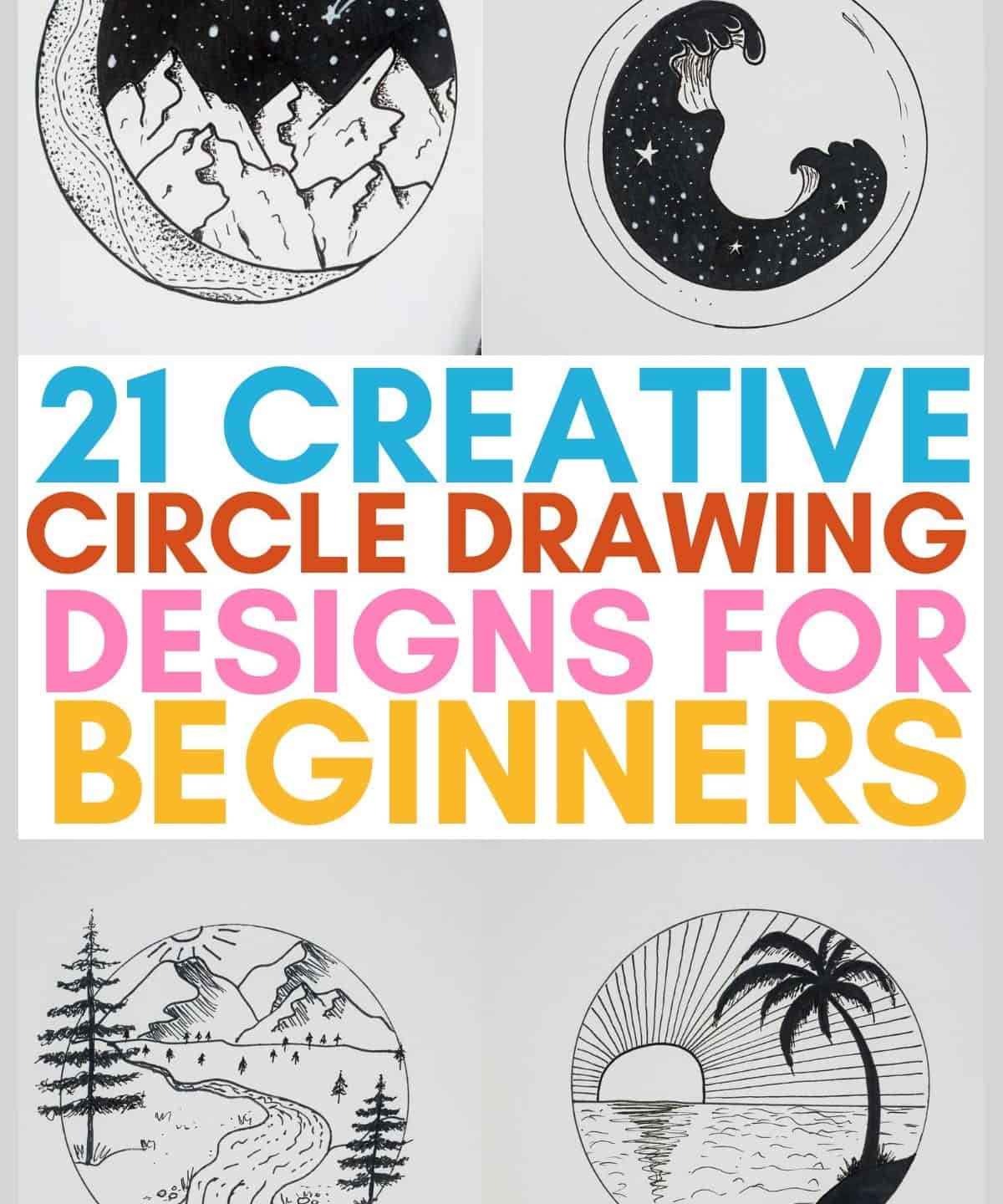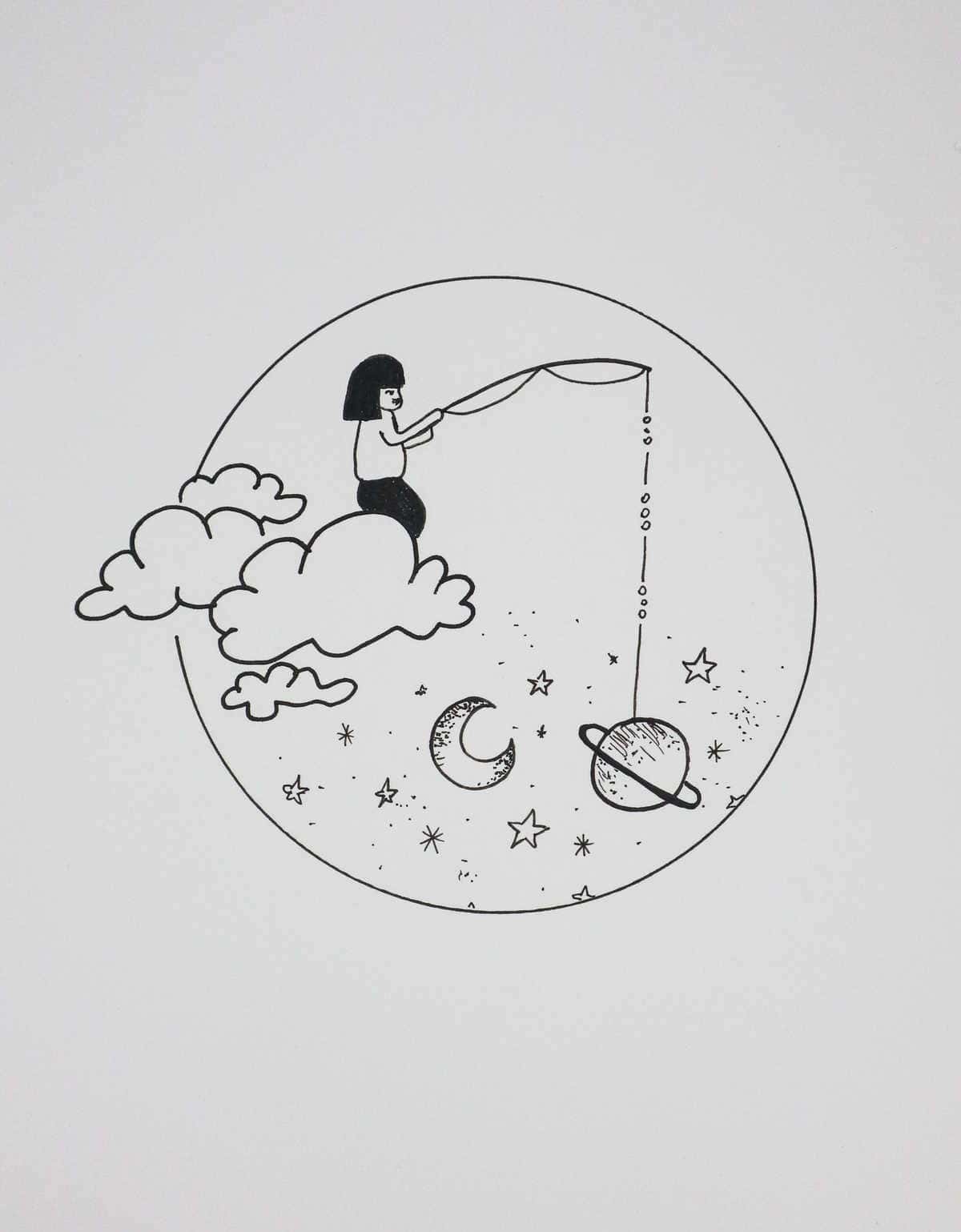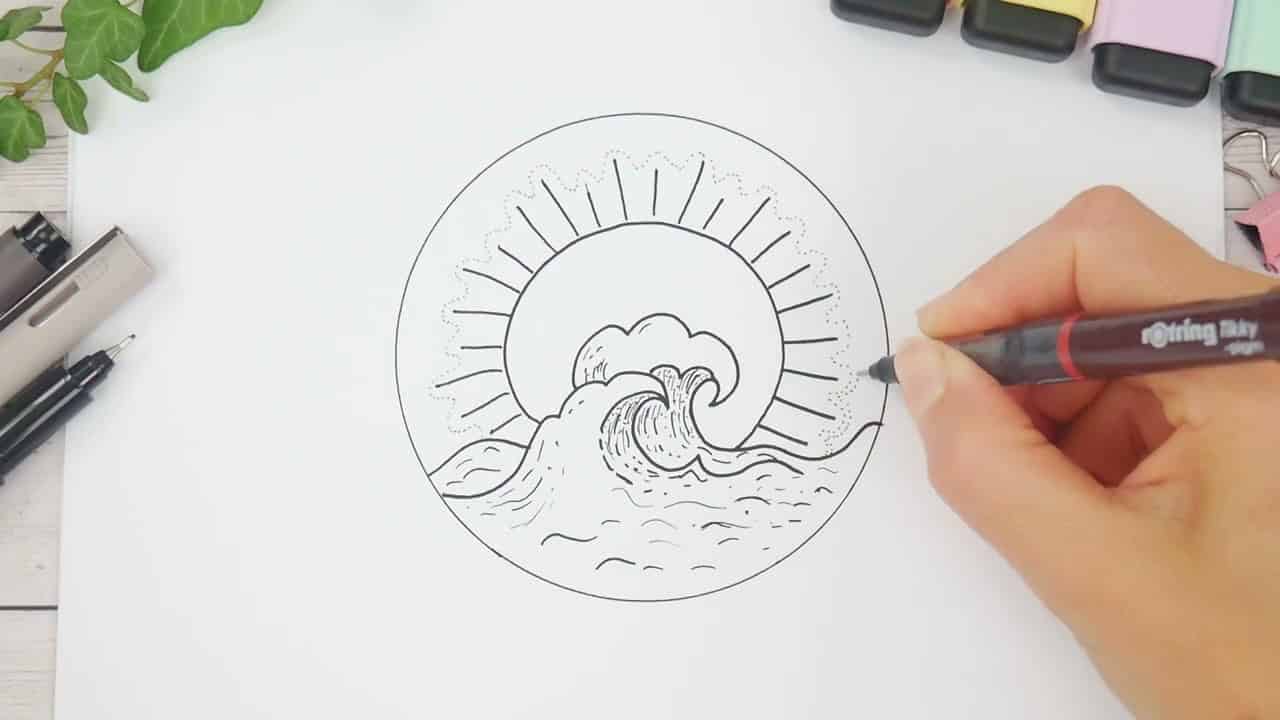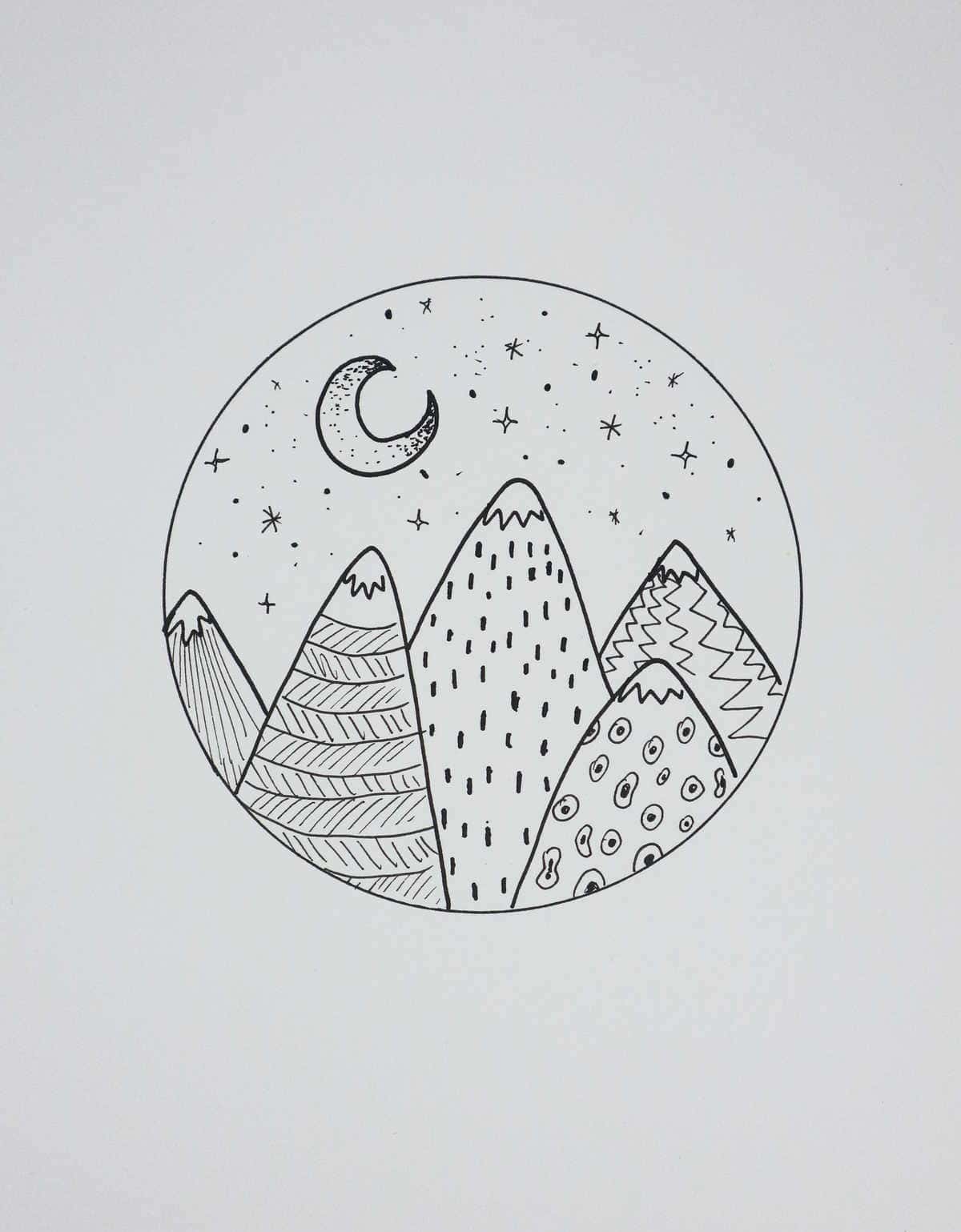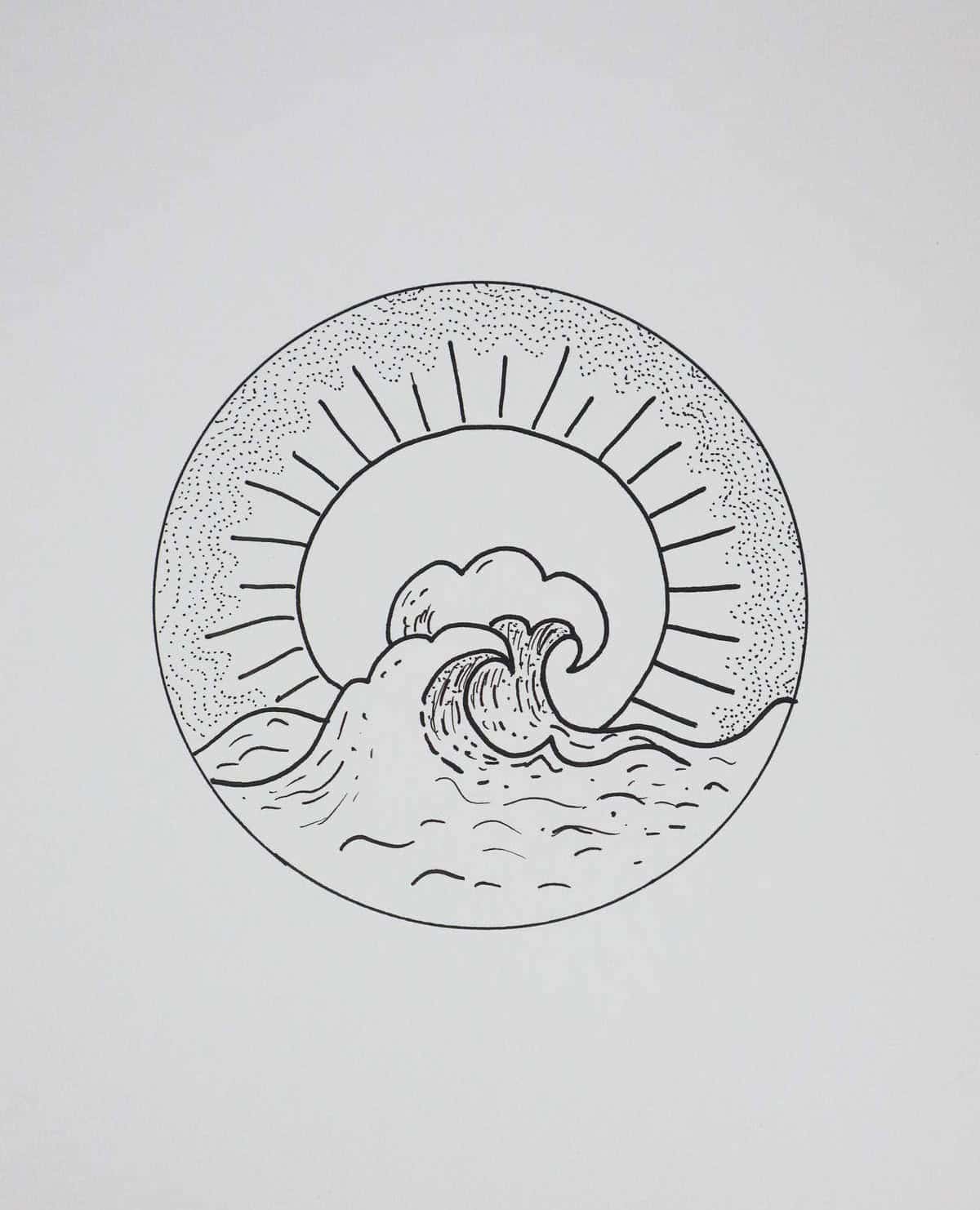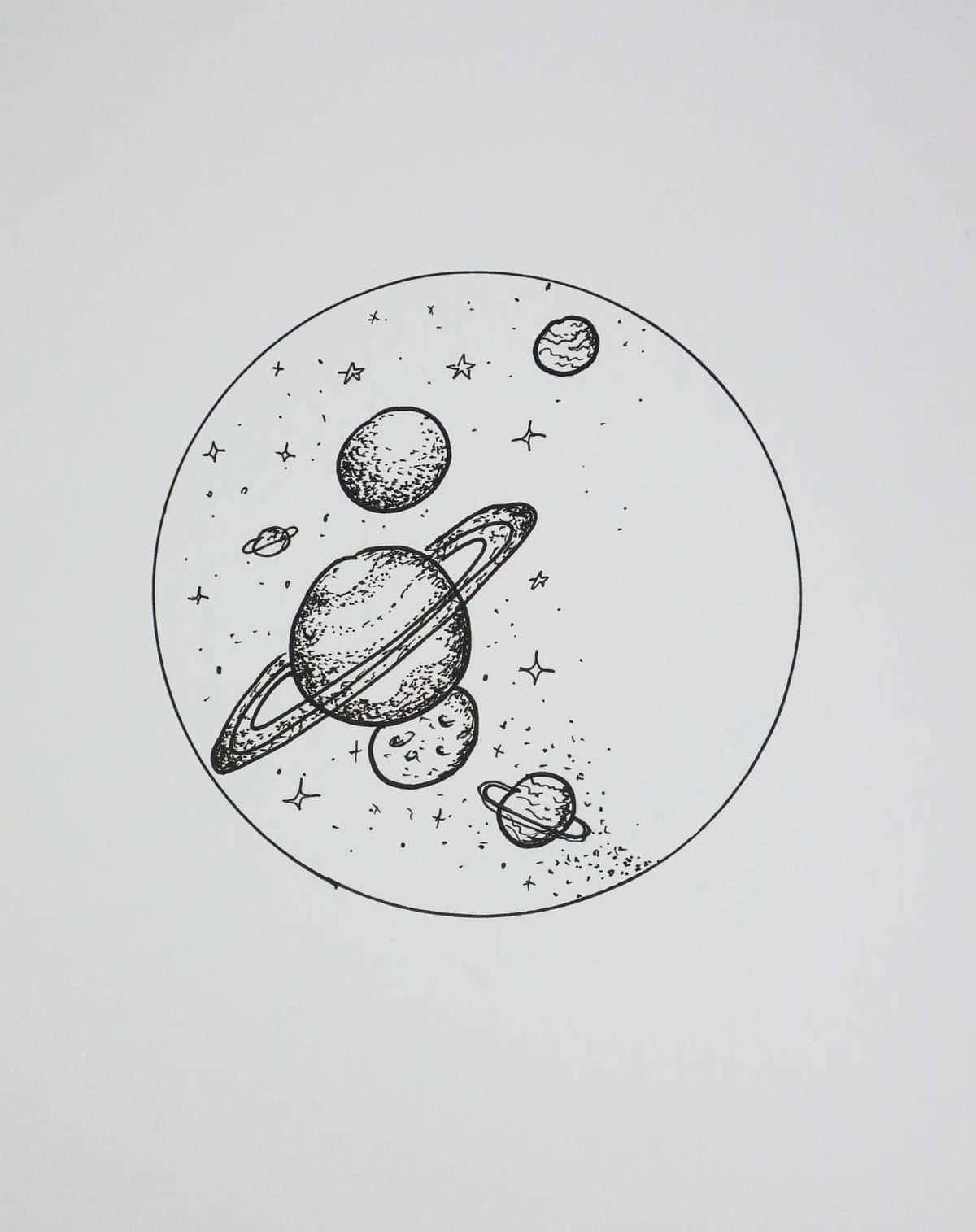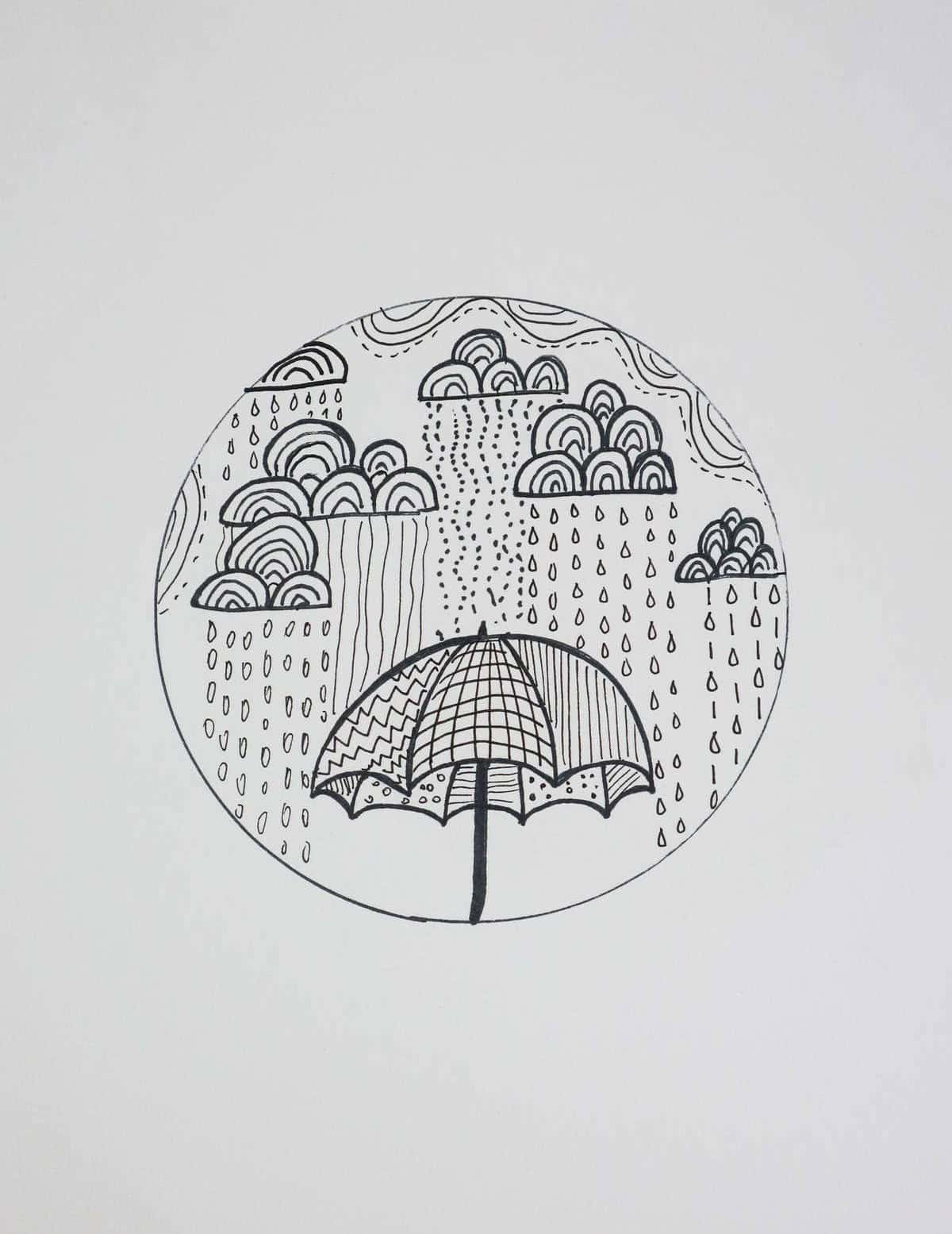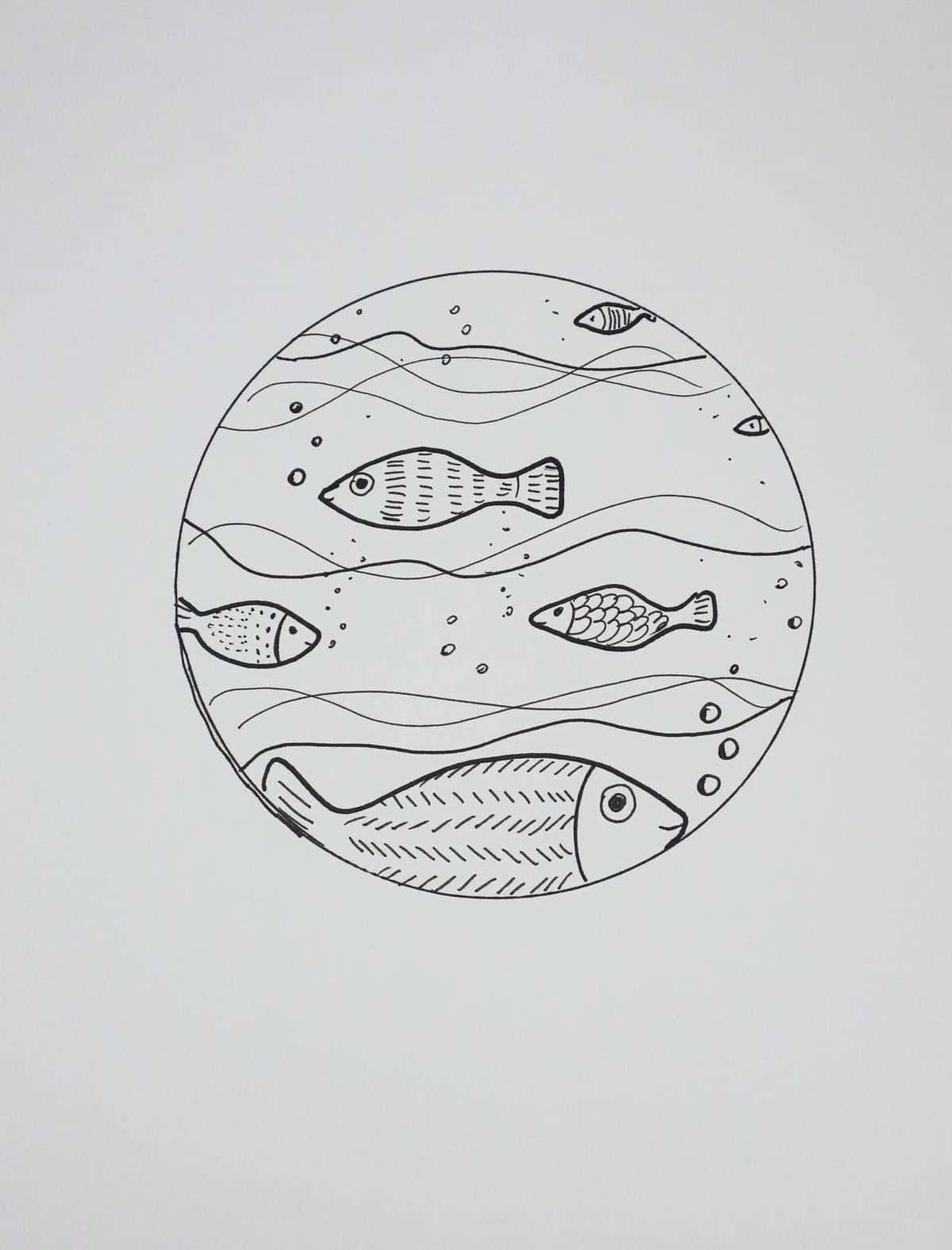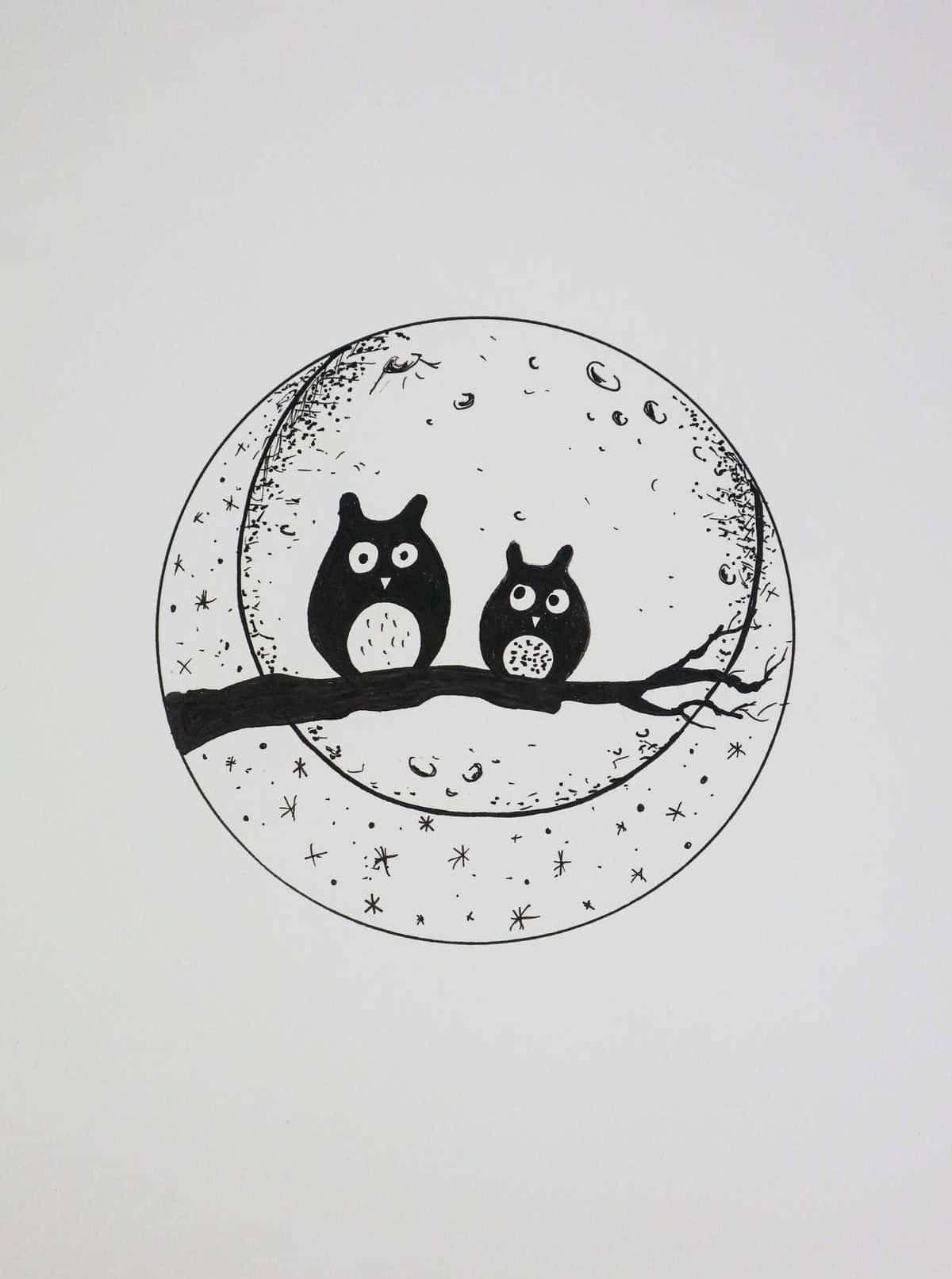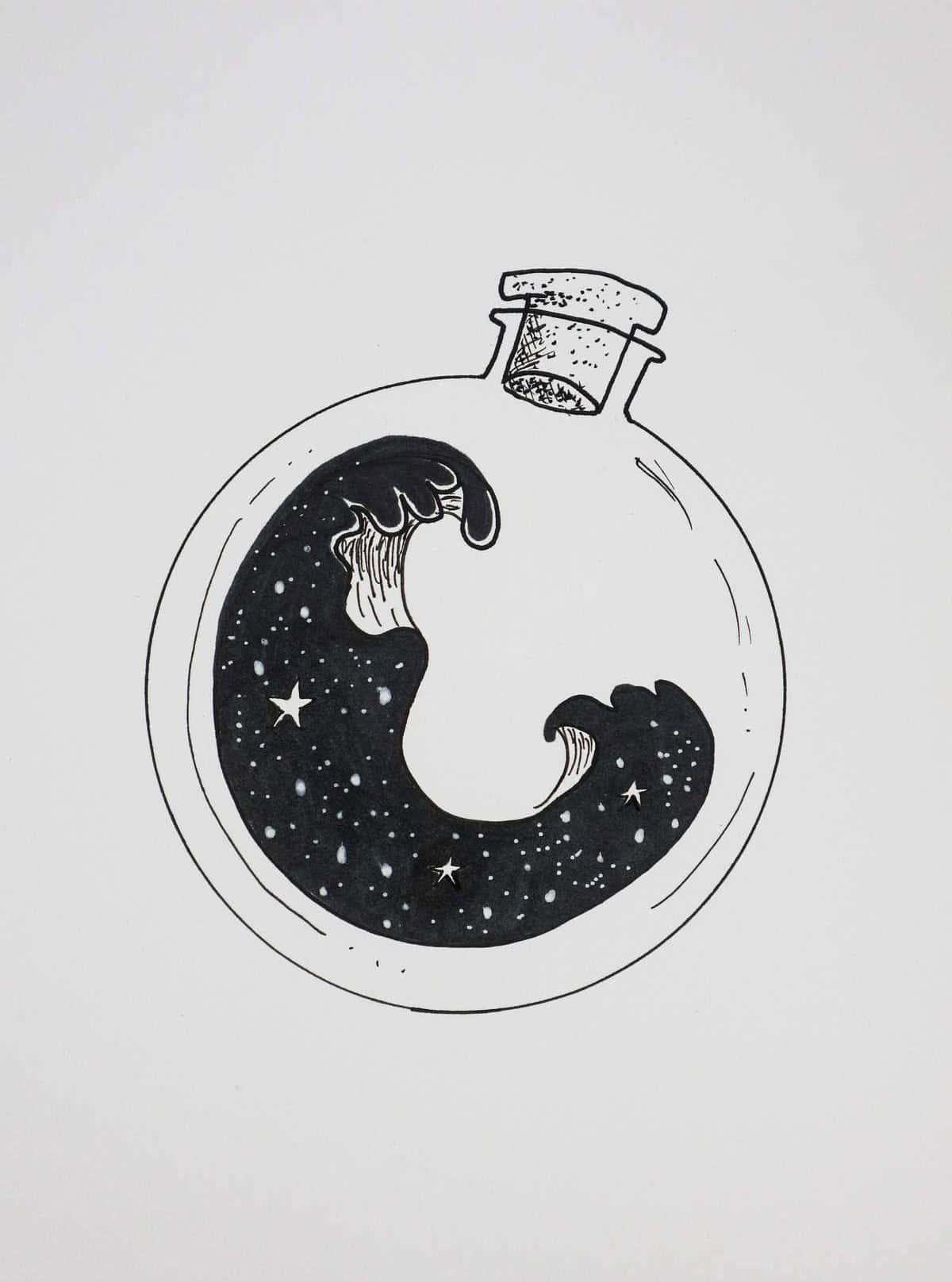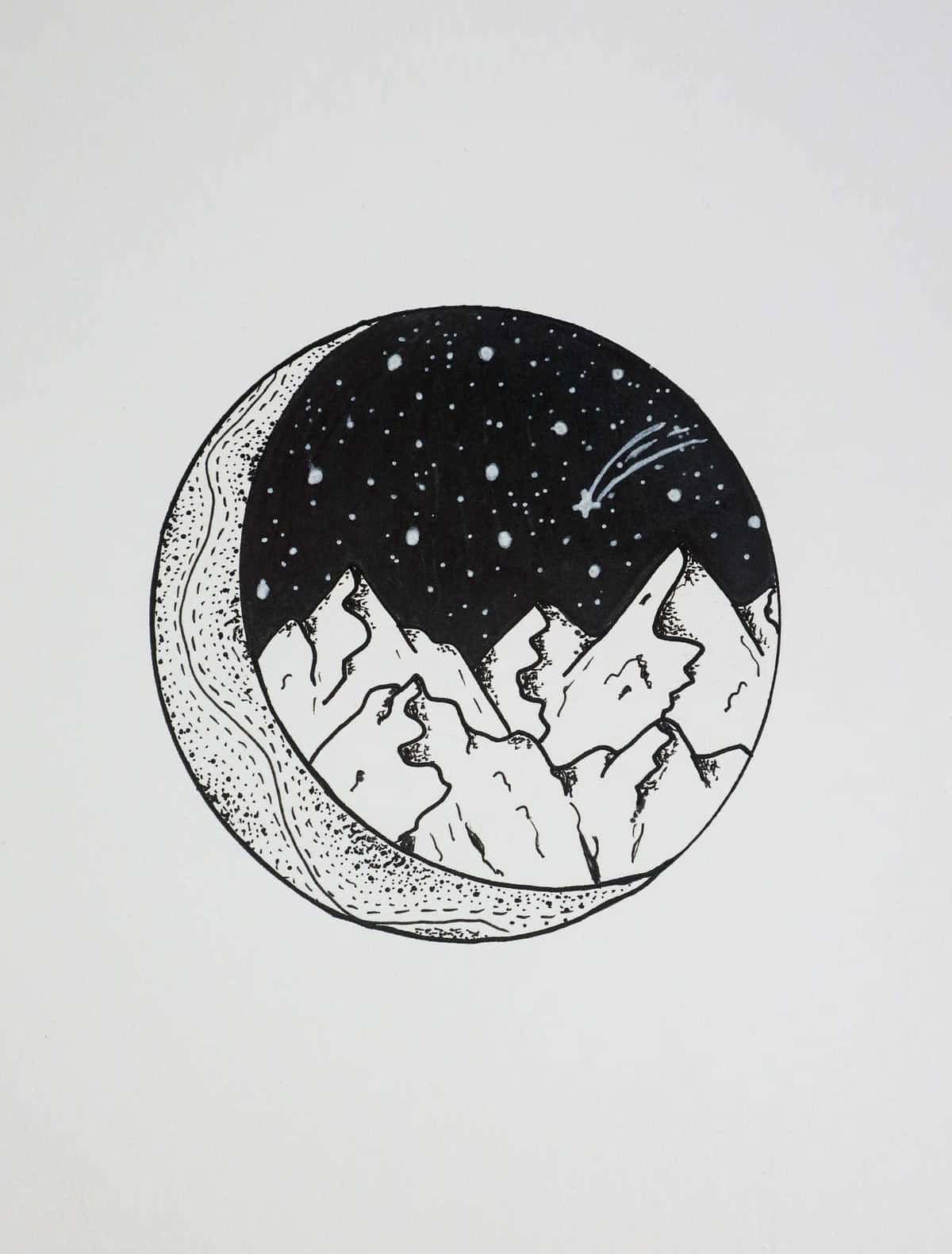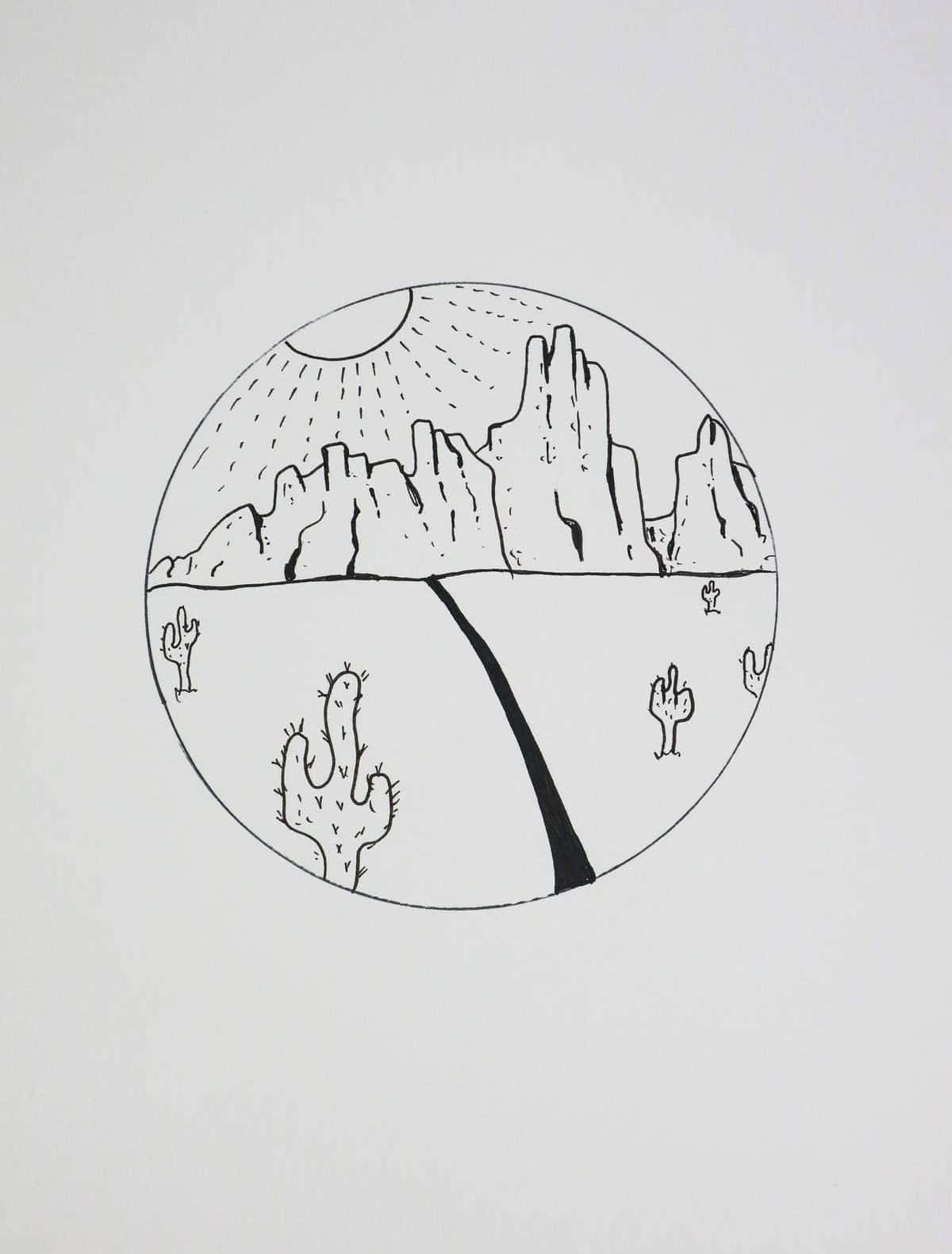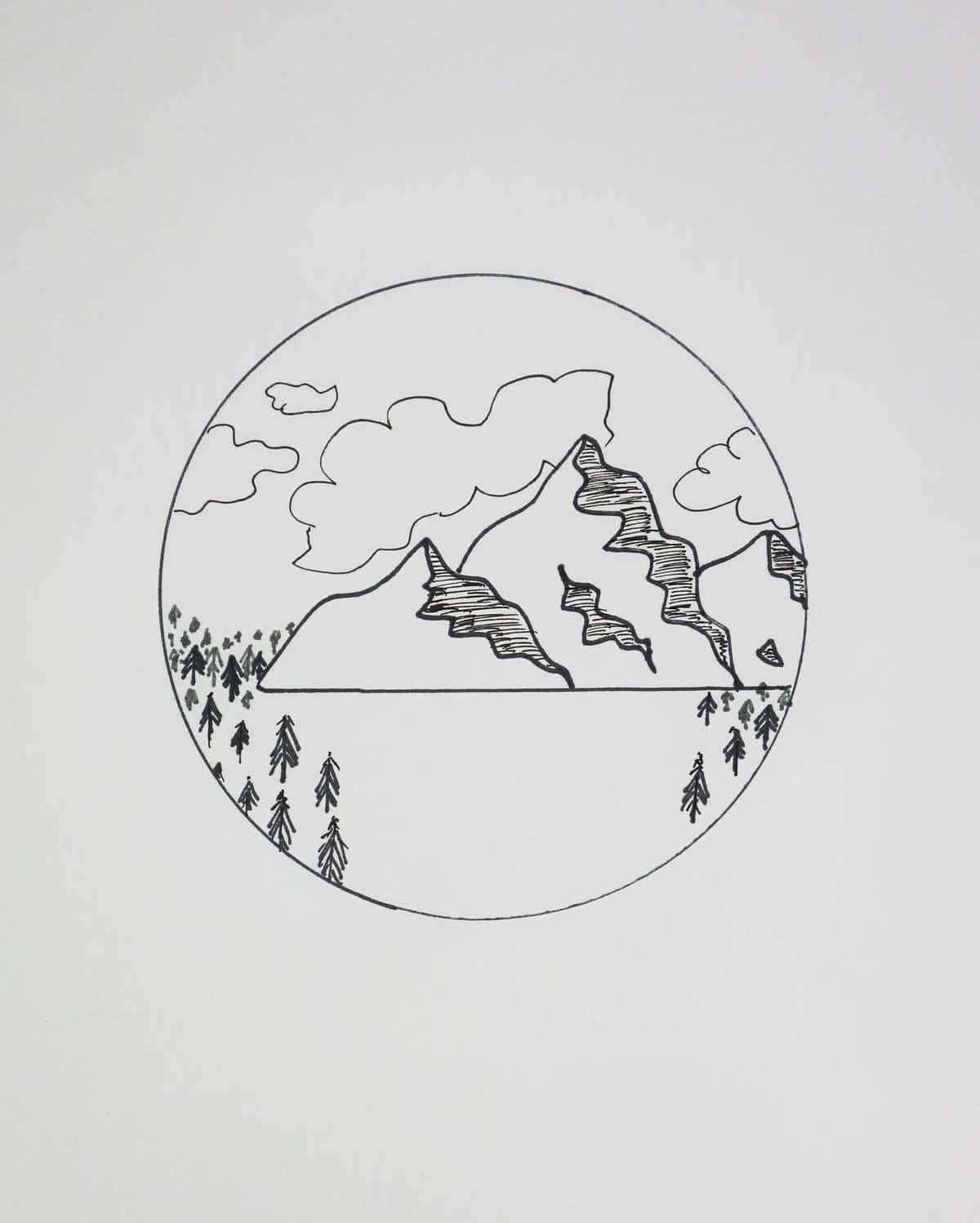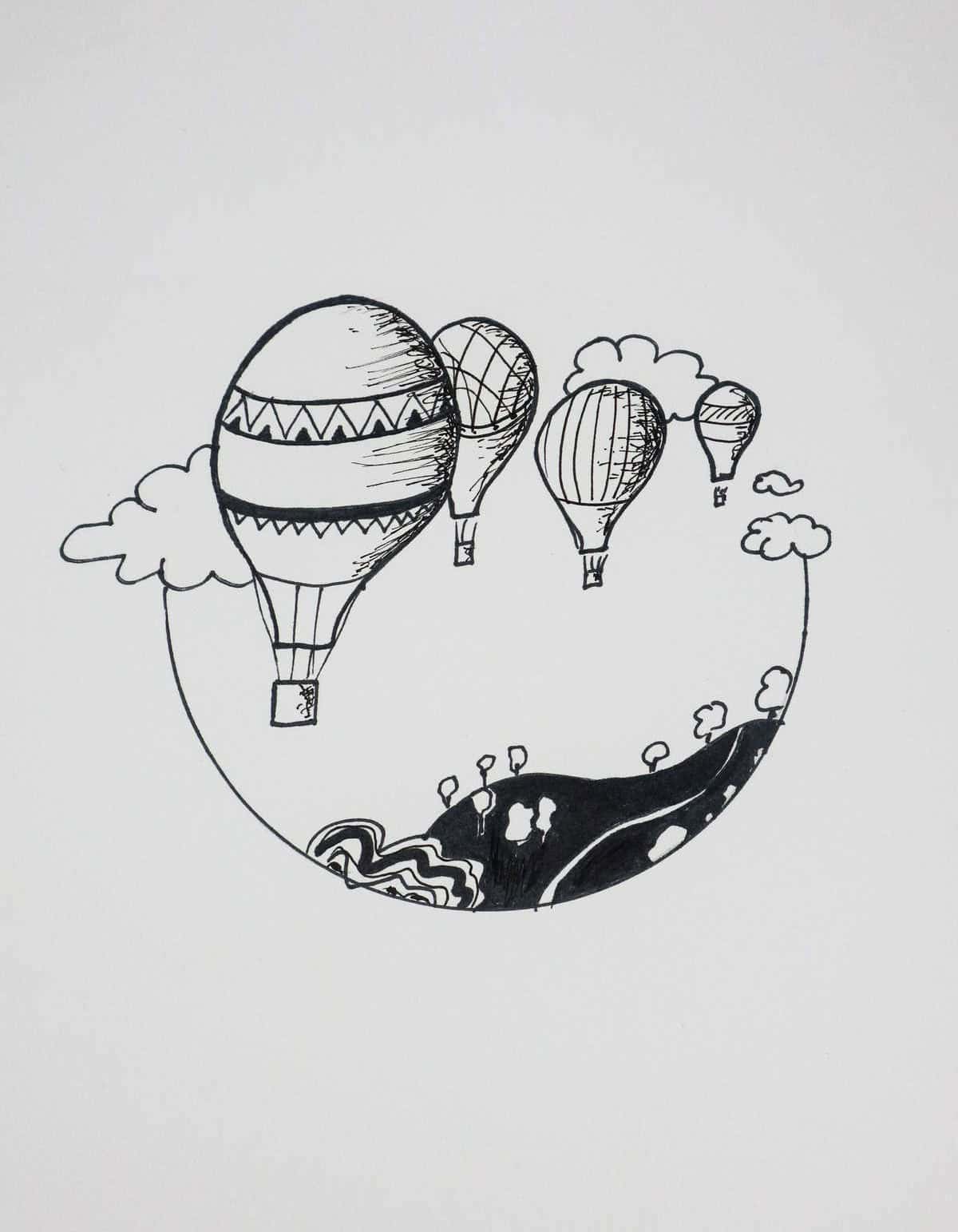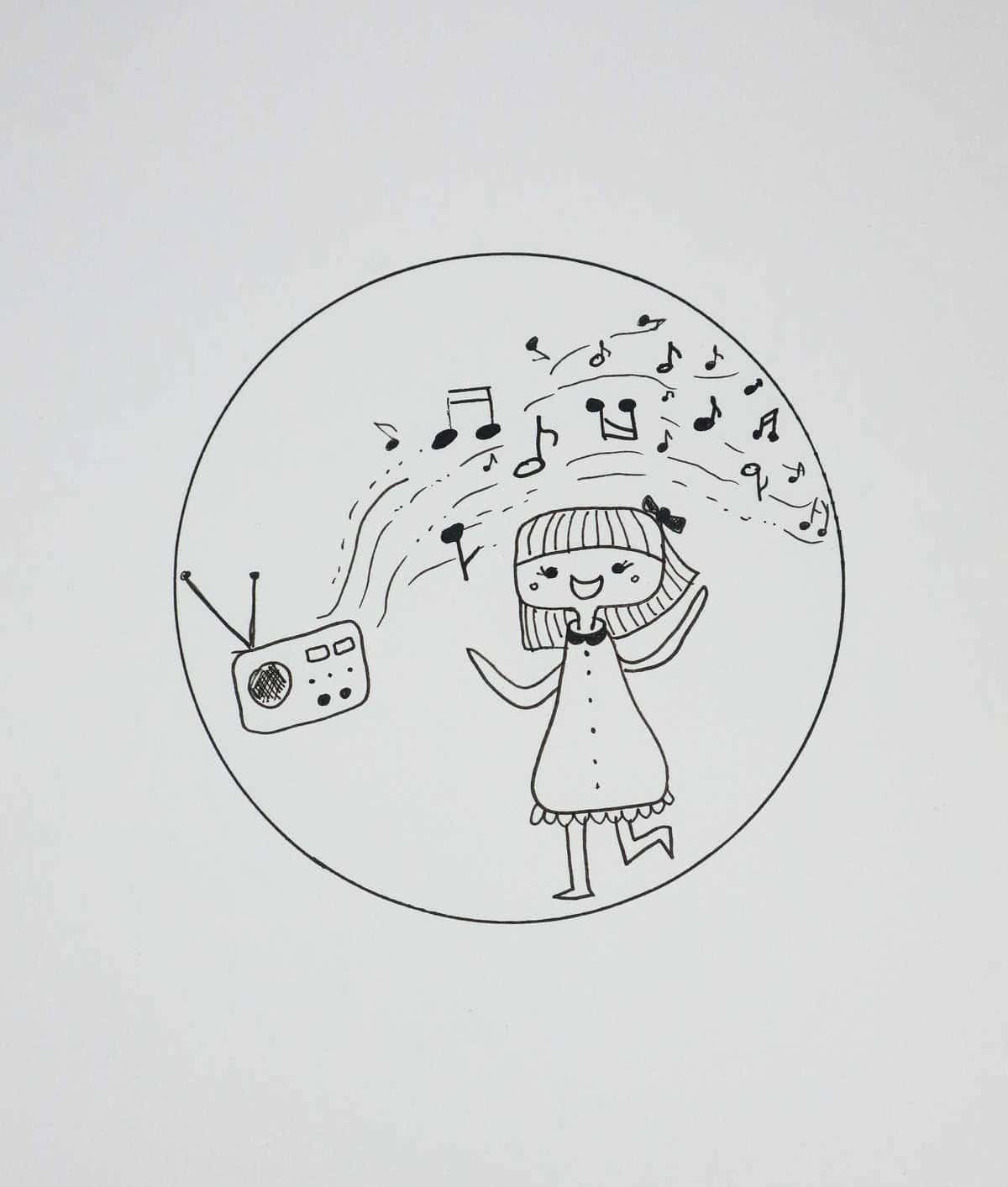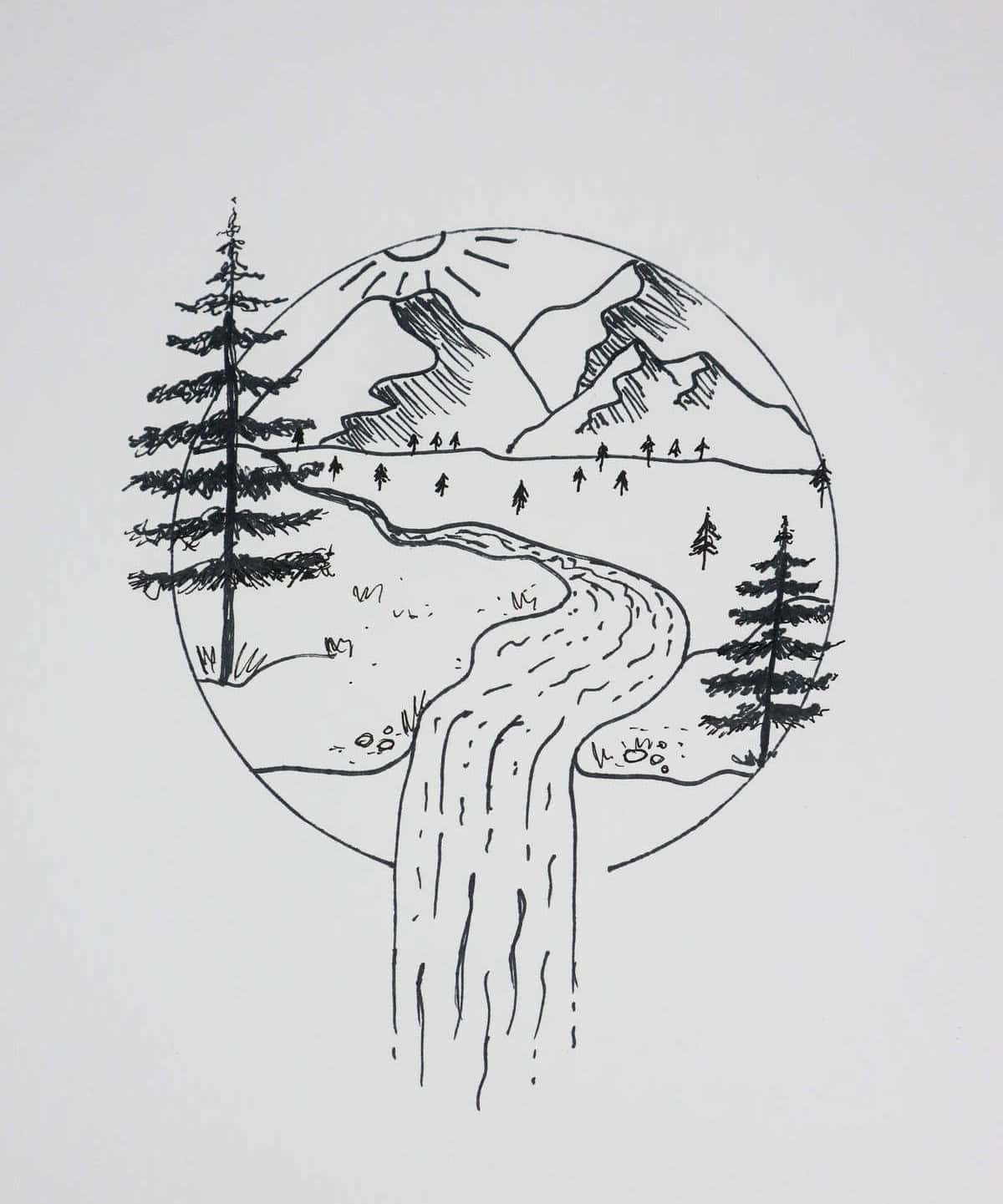When it comes to expanding your drawing skills, one of the biggest hurdles can be deciding what to draw. To help spark some creativity, we’ve curated 21 unique circle drawing ideas that cater to all skill levels and styles. From abstract representations to more defined depictions, these exercises are designed to be accessible and enjoyable for everyone. To get started, you’ll need a few essential tools: skinny pens, thicker ones, a dedicated drawing notebook, and a mini ruler.
Don’t worry too much about the size of your circle – feel free to experiment with both smaller and larger scales. Recent experience has shown that starting small can be an excellent way to practice, but don’t be afraid to push yourself and try out new ideas. With these basics in place, let’s dive in and explore the world of circular creativity!
Fishing
I’ve always been fascinated by the whimsical charm of the Dreamworks logo, featuring a lone fisherman reeling in his catch from the moon. In my imagination, I’d love to see anyone’s favorite character taking on this intergalactic fishing adventure. Simply add your preferred protagonist and a stunning array of celestial bodies below! Don’t forget to get creative with colors – most mediums will work beautifully unless you’re working with smaller scales.
For added convenience, consider using non-bleeding materials for your art supplies. To keep your tools organized, be sure to check out our DIY zipper pouch tutorial!
Watch: 21 Easy Circle Drawing Ideas
Catching Stars
As we venture further into the creative realm, our initial drawing amongst the stars has led us to a captivating scene of celestial bodies being caught in a net. The experience of bringing this concept to life was pleasantly surprising, and I encourage you to add your own personal touch to this cosmic canvas. Feel free to introduce a planet, astronaut, alien, or any other out-of-this-world character that sparks your imagination.
Mountains
Creating a stunning landscape art piece featuring mountains is an excellent way to showcase your creativity. Not only are these artworks fun to make, but they also make for thoughtful gifts. To elevate the piece, consider placing it within a decorative frame that complements the overall aesthetic. The real magic happens when you add depth and dimension to the mountains by filling in the bases with unique patterns. This attention to detail will create a visually appealing and engaging art piece.
Finally, bring the scene to life by adding a stunning sky, whether depicting a serene daytime landscape or a breathtaking nighttime vista.
Waves
Imagine a serene seascape that transports you to a world of tranquility. Begin by depicting the ocean as the main attraction, with a wave or ripples in the foreground serving as the focal point. As you transition to the background, envision the sun rising above the silhouette of the wave, its warm rays illuminating the textured elements and subtle details.
The scattered dots surrounding the sun add an extra layer of realism, evoking the sensation of basking in the sun’s warmth while being gently caressed by the ocean breeze.
Clouds
As you bring your creativity to life on paper, consider incorporating clouds as a way to add visual interest and dimensionality to your design. For those who appreciate symmetry, mirroring the shape of the clouds with wiggly lines or spirals can create a striking and harmonious composition. On the other hand, deliberately varying the shapes and patterns can add a touch of whimsy and playfulness to your artwork.
The key is to strike a balance between the cloudy forms and the negative space, allowing each element to complement the other in a visually appealing way.
Universe
As our gaze returns to the vast expanse of space, we can focus on a specific slice of the universe within this designated diameter. The Milky Way, with its celestial bodies and luminous stars, offers endless possibilities for artistic expression. Whether you choose to draw the planets, the sun, or the moon, the level of detail is crucial in bringing these elements to life. The texture, too, plays a vital role in imbuing our artwork with depth and dimensionality.
Rain
Imagine combining the whimsical nature of clouds with the unpredictable charm of rain showers. This rainy drawing is an excellent opportunity to create playful doodling patterns throughout, focusing on capturing the umbrella’s structure as the main attraction. Once completed, the fun really begins. The umbrella’s panels can be transformed into a vibrant patchwork, offering endless possibilities for creative expression.
Similarly, the raindrops can be paired with various patterns, allowing you to let your imagination run wild. The result is an eye-catching and unconventional take on traditional rain shapes.
Fish
When it comes to creating a fish drawing, I find that playing with different sizes of fish adds an extra layer of excitement to the process. To start, I begin by deciding where the largest fish will reside in the composition, and then build upon that foundation by incorporating other elements and details. This approach allows for a more dynamic and engaging final piece.
Globe
Take your creative expression to new heights by embracing unconventional artistic boundaries. Instead of staying within the confines of a standard circle, why not explore the uncharted territories on either side of the line? This liberating approach can lead to some fascinating creations, such as intricate globe renderings featuring defined or abstract country silhouettes.
With this newfound freedom, the possibilities are endless, allowing you to craft unique and captivating visual representations that push the limits of your imagination.
Owls
As an owl enthusiast, my kids’ fascination with these nocturnal creatures often inspires me to grab a pencil and create some whimsical illustrations. For this particular piece, I aimed to capture the essence of a nighttime scene. To achieve this, I opted for a more subtle approach, focusing on simplicity while still conveying the owls’ distinct features. If you’ve fallen under their charming spell like my kids have, be sure to explore these straightforward cat drawing ideas as well!
Beach
As I gaze upon this beach scene, I’m torn between its serene charm and the dynamic energy of the surf wave. What makes both stand out are the meticulous details that breathe life into them! To achieve such precision, I employed my trusty mini ruler to ensure crisp, even lines for the sunshine, and then painstakingly added tiny pen strokes to define the palm tree’s texture.
Universe
Breaking down this intricate universe drawing into manageable steps can make the process feel less daunting. We’ll begin by crafting a foundation for our space rock, starting with an abstract shape that represents the subject’s surroundings. Next, draw a mirrored line below it to create depth and add texture by filling in the marks. Then, bring your figure and craters to life on the surface.
Once you’ve got those elements in place, focus on adding detail to what the subject is looking at – this could be anything from stars and planets to creatures or otherworldly structures. Finally, take a step back and add some finishing touches with small circles or minor details in the sky before bringing everything together with black pen.
Water in a Bottle
Start by lightly sketching a circle with pencil, leaving room for adjustments. Next, draw a larger circle, leaving a small opening that will serve as the bottle’s neck. Erase parts of the initial circle and redraw them in pen. Add some water at the bottom and refine the details, filling in any negative space with black ink. With these simple steps, you’ll have a fun and engaging drawing experience.
Night Time
To take your night sky doodle to the next level, try a different approach: start by adding details first, followed by coloring in the negative space around them. Don’t be afraid to experiment and section off areas of your circle to create depth and dimension, just like I did. This technique can also work well for depicting any geographical scene that catches your eye – from majestic mountain ranges to serene beachscapes.
Desert
When crafting your desert landscape, pay attention to the sense of aridity and emptiness I’ve aimed to convey. The judicious inclusion of specific details can greatly enhance the overall atmosphere of desolation. Explore more creative possibilities with these easy drawing ideas.
Nature
As I experiment with spatial relationships in this nature-inspired setting, it’s surprising how challenging it can be to achieve the desired visual impact. The key lies not only in the overall composition but also in manipulating perspective to create a sense of depth and grandeur. When crafting these scenes, it’s essential to consider the vastness of the landscape and aim for a sense of distance, rather than getting bogged down in the intricacies of the foreground.
Air Balloons
The ability to adopt different perspectives as an artist is a crucial aspect of creativity! Without this skill, I wouldn’t be able to bring my imaginative ideas to life, like illustrating those whimsical hot air balloons. It’s not just about having a unique outlook, but also being able to effectively convey that vision onto paper. To achieve this, start by drawing the entire circle in pencil and then erase the top half, creating a blank canvas for your airborne creations.
From here, you can add balloons, fluffy clouds, and other details that soar above the ordinary.
The Power of Music
Investing in the art of movement doesn’t have to mean grand, elaborate gestures. In fact, small moments of practice can be incredibly effective in building skills and confidence. For instance, try incorporating simple movements into a scenario like someone dancing to music. The dancer can move freely, allowing you to focus on capturing the fluidity of their actions.
Alternatively, if you’re still developing your movement skills, consider focusing on smaller details that still convey a sense of motion. This could be as subtle as depicting limbs or even having the musical notes emanating from a music player seem to come alive and move in harmony with the rhythm.
JellyFish
When exploring creative movement in drawings, jellyfish offer a unique and fascinating subject matter. Begin by capturing the main body of the sea creature, before shifting focus to the swirling bubbles that surround it. Once these are rendered, move on to the legs – paying particular attention to those who desire added detail.
To convey the jellyfish’s gentle progression through the water, add a few strategically placed bubbles above the legs, allowing for a dynamic visual representation of its movement.
Trees
As we conclude our journey through circle drawings, a simple string of trees offers an accessible and classic design. Begin by creating a horizontal line roughly one-third from the bottom to establish your tree’s base. The beauty lies in its simplicity – draw trees of varying sizes and types to add depth and character to your scene. Feel free to embellish with additional details as you see fit, allowing the subtlety of the original design to shine through.
These delightful flower painting ideas serve as a reminder to tap into nature’s creative potential.
River
As we bring this creative journey to a close, I’d like to share one of my personal favorites: depicting a natural landscape surrounding a river. Remember, perspective is key to capturing the essence of this scene. To begin, define the scope and scale of your river by deciding on its location and size within your composition. Divide the space accordingly, allowing you to build upon your design.
In my example, I placed the skyline approximately two-thirds from the bottom of the circle, creating a sense of depth. Next, draw in the river itself, leaving sufficient space for a visual cue that indicates the water’s depth. This can be achieved by drawing a subtle line that drops off the edge of the page, giving the illusion of flowing water. Finally, flesh out the foreground and background with details that will bring your vision to life.


